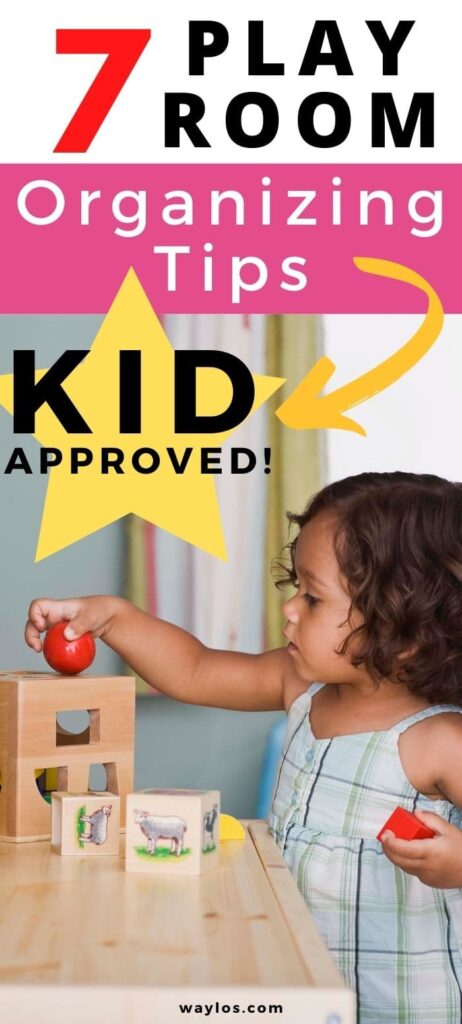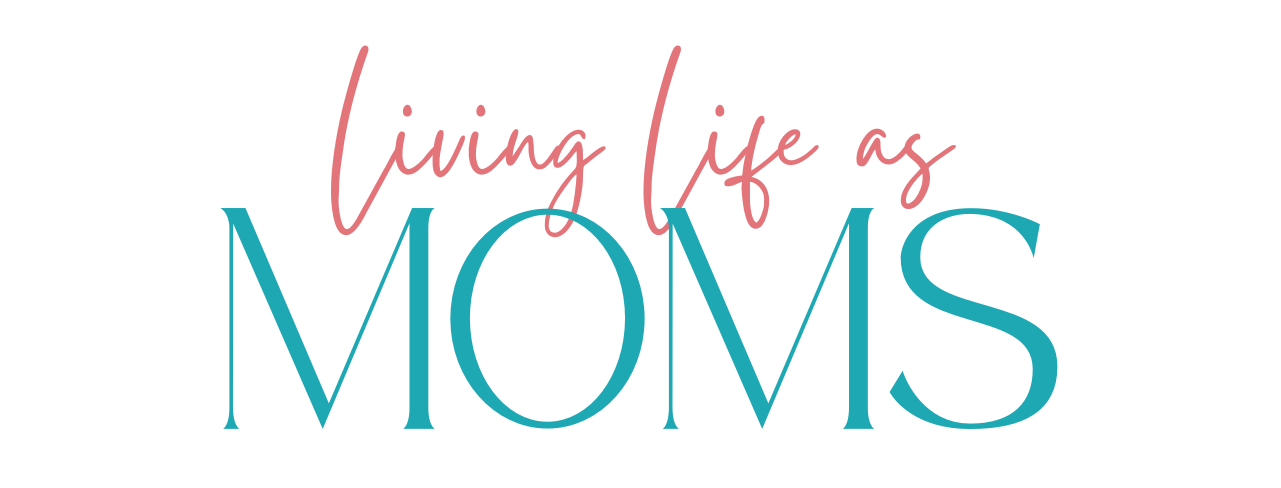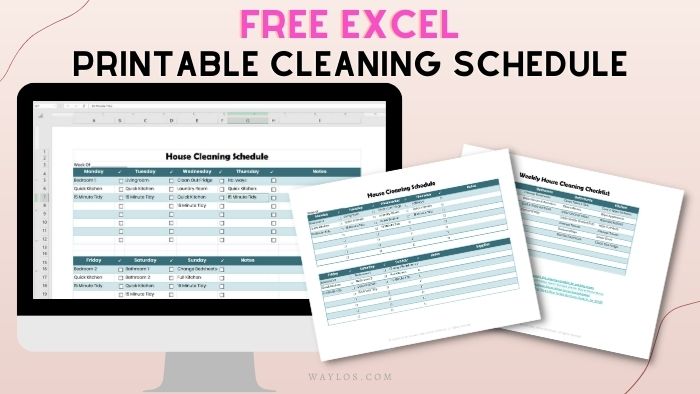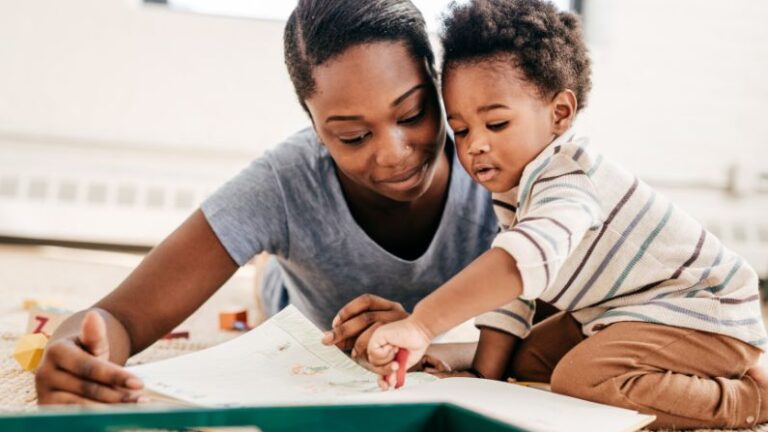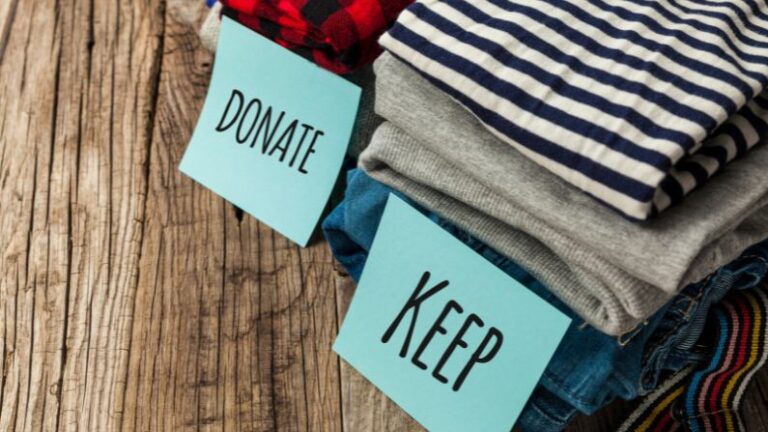How To Organize a Playroom: 7 Practical & Easy Tips

I can’t wait to show you these 7 tips for how to organize a playroom, and keep it tidy! I bet you haven’t tried a few of these before, and they’re ALL functional, I promise!
Some days, I feel like there is no point in cleaning up toys. It’s like a “Groundhog Day”- nightmare, it doesn’t matter how clean I get it, the very next day it will be exactly how it was before I cleaned up.
So, I had to get the toys in some sort of order, and the family in on a system to keep them that way, without sucking the “fun & learning” out of the whole experience….that’s the point, isn’t it?
Kids need a creative space and practice with motor skills, turn-taking, physics, and all of that. So we don’t want to make it TOO TOO neat, if you know what I’m saying.
Here are my Seven Tips for how to organize a messy playroom, in practical ways that make sense for the situation (that situation being: Kids. Are. Involved.).
1. Choose Multi-functional Organization.
Hear me out before you scroll down: The overarching idea to start with here, is that everything needs to have a place. If there isn’t anywhere to put the thing, it will NEVER be put away.
I have a boy and a girl, and I’ve found that toys tend to fall into one of these categories:
- Collectible – lots of tiny pieces – legos, doll accessories, old party favors, figurines, small toy cars
- Big & Fluffy – stuffed animals & soft toys
- Electrical – remote control cars, little “computer” type boards
- Flat – board games, puzzles
- *Crafty – science experiments, kinetic sand (WHO thought it was a good idea to invent that?!?) art “suitcases” with ten million pastels that stain everything, markers/crayons/glitter glue pens
*I don’t like crafty things in a playroom unless there is a dedicated space for it. It is too easy to spill/draw on/sand up an area, and not be able to clean it properly.
In fact, I love these floor mats in the baby sections of stores (or you can find them on Amazon here) for your dedicated arts & crafts area.
You can even get one big tablecloth from the dollar store for a dollar and cut it up to get a few uses out of it.
Anyway, there are so many different bins, baskets, shelves, hooks and boxes out in the world, it could make your head spin.
Plus, kids are constantly growing in & out of different toys, and you are probably getting more & more of them with each holiday.
Here’s what I figured out – getting one or two storage pieces that have multiple purposes is a great space-saver.
I bought these two shelves with floor bins years ago at Babies R Us, but I see variations of them pretty much everywhere, and I’ll link to some other stores that have them:
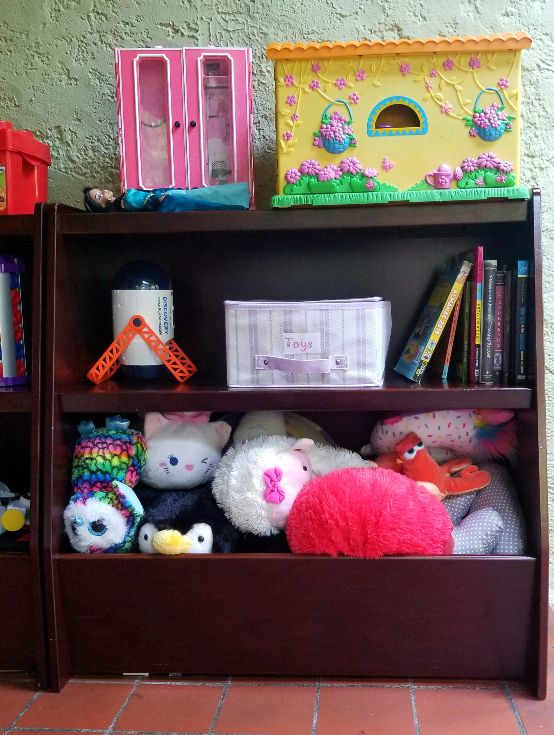
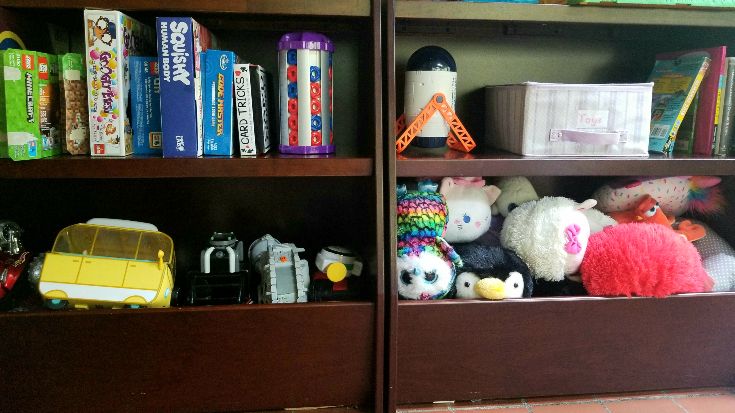
This furniture can hold the “big/fluffy,” “flat” & “electrical” categories, all on its own. Then, you can add smaller bins or boxes to hold the tiny “collectibles” category.
Boom. All toy categories taken care of. It’s a great choice if you don’t have a lot of space. (Remember wall anchors!! Kids climb!)
2. Consider Storing Bins in Place by Age Group.
Very small kids are still prone to grabbing and pulling on furniture (and boxes, because why not) to hoist themselves up (aww! I remember those days). Placing their toys closer to the floor makes independently reaching for them easier, and can help make it easier for them to put things away.
For older kids: Bins on shelves that have open fronts are great (less annoying for them to put away). If you have a mix of age groups, storing toys like legos, that can be choking hazards, inside of furniture (like ottomans) so older kids can get to them but younger kids can’t, is very useful.
By the way, I loved having those big “locks & latches” fine-motor-skill toys on the actual floor in front of the toy bins. I got a LOT more use out of them since they were front-and-center, easily reachable & flat on the floor.
(Quick tip to extend the life out of that type of toy, I used to print out different characters and tape them inside/underneath/behind the flaps, so sometimes there would be something new under the flap and it would make them open the other ones too……just so they don’t get bored with it, since it’s an important skill to practice.)
Much older kids are known to amass collections of figurines. These can possibly be stored in boxes under the bed/in the closet/in the drawer in their rooms, and be responsible to clean those up.
3. Consider Labeling Your Storage, But Not Too Specifically.
Labeling bins can be terrific, IF it actually works out that your kids follow the labels. There’s also the incredibly inconvenient fact that kids grow out of toys faster than they can play with them. There’s a good chance you’ll be re-labeling all your bins, shelves & baskets three times a year.
If you’ve GOT to label like it’s in your blood (same), consider some out-of-the-box ways the toys can be categorized.
For example, a huge pet peeve of mine is mixing tiny little toys with huge toys in one bin or basket. It drives me crazy. The tiny toys never get played with because they sink to the bottom, and then when we go through our things to donate, those are the first things they want to keep, since they seem like they are brand new.
So, organizing some toys by SIZE has been saving my freaking sanity.
If you’ve got pre-schoolers or are home schooling, it’s as easy as printing out a huge word “BIG” and a tiny word “small” on a piece of paper to label certain baskets or bins. Great practice!
4. A Playroom Doesn’t Have To Be An Entire Room.
In my house for example, we store toys in the corner of a back room that has a lot of floor space. If it is at all possible, have the play area/playroom in a room that is not immediately able to be seen from walking through the front door. That way, if company comes and you didn’t get to cleaning up, it won’t be a big eyesore.
5. Consider Creative Uses For The Usual Storage Containers.
For example, we purchased this book rack, but the kids are growing out of the big thin picture books. It’s now a perfect place for thin board games, puzzle boxes, video games (in their holding containers, otherwise they’ll get lost):
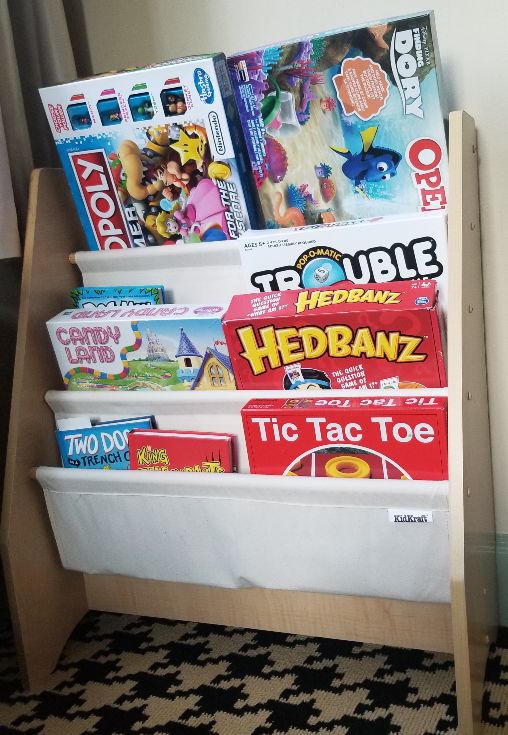
We can even add one of those fabric beside-the-bed caddies to hold stray game pieces that pop up around the house.
6. Do A Family Declutter at Strategic Times of The Year (::wink wink::).
A few weeks before any gift-giving time, like each child’s birthday or any gift-giving holiday, we do a declutter of all the toys. I give each kid their own (big) paper bag and they have to fill it, “to make room for the new things they’ll be getting.” This works EVERY time in my house.
I have a bag for garbage, so while they are moving things around, I can throw away any actual trash. Once they are done, I take some time alone to:
- throw away any damaged or broken toys, and
- add to the donate pile any toys that I know they don’t play with anymore or have outgrown.
This works out to about 3-4 legitimate decluttering sessions each year. And guess what? When MY birthday comes around, they want to know when I’M going to “make room” for my birthday things!
Not wanting to look like a hypocrite in front of my kids is serious organization motivation! I hug them SO HARD for being amazing, wonderful humans & reminding me lol!
7. Don’t Worry If Kids Don’t Feel Like Putting Their Things Away EVERY Time.
Remember that they’ve been told what to do literally the entire day at school (or by us). Even adults have their limit on being talked at.
Try to make it fun, like:
- Making a counting game,
- or a race,
- or ‘tucking in” the toys each night. Whatever works!
Organizing Your Playroom
I hope that you’ve found some new & easy ways to organize your playroom and help your family keep their toys tidy & ready for fun!
What’s your favorite unique way to store toys? Let me know in the comments!
XO,
-Mina
P.S.: Here are some MORE posts you may find useful!
- How to Organize Your Whole House, with One Etsy Order!
- How to Declutter Any Room in 30 Minutes (or Less!)
- The Perfect Marie Kondo- Inspired Gift Guide
